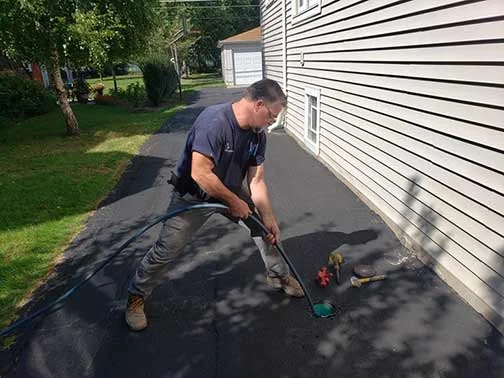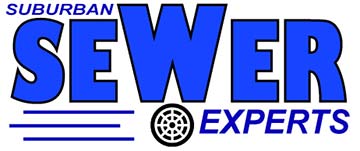
Maintaining optimal flow in drainpipes is the best way to ensure the health of your building’s drainage system, says LRES Property Management experts. When wastewater flows smoothly through the entire system, the risk of clogs, blockages, and other drainage issues will be minimized.
The question is: How do you ensure optimal flow in a drainage system? It begins with the design and installation of the pipes. Your pipes should have a minimum slope of 1/8 – 1/4 inch per foot and a maximum of not more than 3 inches per foot. The pipes must also be the right size.
But even with these conditions met, there is no guarantee that your drainage system will not suffer from clogs, blockages, or even backups. This is because slope and pipe size are not the only factors determining flow rate. It is also important to keep the pipes free of debris.
Accumulated debris in drainage pipes can slow the water flow, causing even more debris to settle inside the pipes. Once this cycle begins, it is hard to stop, and it is only a matter of time before your drains become slow due to the debris inside the pipes.
How do you solve this problem? The solution is two-fold: minimize the debris flow into your drainage system and hydrojet the pipes to remove the accumulated debris. How to do these steps? We explain the processes below.
How to keep debris out of your drains
- Install strainers
Installing the right strainers on sinks and shower drains will help keep debris out of your drainage pipes. Note that, to retain their effectiveness, drain strainers must be cleaned periodically.
- Flush only toilet paper
Only human waste, toilet paper, and water should enter the toilet. Keep so-called flushable products out of your toilet: paper towels and wipes, tissues, condoms, diapers, feminine hygiene products, etc.
- Dispose of food waste properly
Dispose of food waste in the trash, not in the garbage disposal. Starchy foods like pasta, mashed potatoes, and rice will clog your drains. Stringy veggies, coffee grounds, eggshells, cat litter, etc., will also impede water flow.
- Be careful with FOG
Fats, oils, and grease (FOG) are a drainage system’s worst enemy. Inside the drains, FOG becomes hard and sticky, lining pipe walls and acting like a magnet to capture and trap the debris inside wastewater.
Hydrojetting your drains to maintain optimal flow
Hydrojetting is the most efficient way to clear debris from your drainage system. It uses streams of high-pressure water, delivered directly inside the pipes, to blast away the accumulated debris inside the drainpipes. Hydrojetting is effective for getting rid of all kinds of blockages.
A hydrojetting setup includes a large water tank, a pressurizing machine (or jetter), and a high-pressure flexible water hose with a stainless-steel nozzle at the end. These nozzles are equipped with front-/back-facing jets and come in various sizes for different pipe dimensions.
These jets allow water to be sprayed in all directions inside the pipes, making it possible to blast away the blockages inside the line and scour pipe walls. Regular hydrojetting is the best way to keep your drainage system flowing freely.
Why is hydrojetting such a great choice for your drainage systems?
- Meticulous cleaning
Hydrojetting will dislodge the debris inside your drainpipes, wash the inner walls of the pipes, and flush the loosened debris out of the drainage system. This restores the function of the drainage pipes to almost as good as new.
- Long-lasting results
The effects of other drain-cleaning methods such as sewer rodding are often short-lived because the root cause of the problems is not dealt with. With hydrojetting, you can be sure that your drains will stay clog-free for months or even after a year.
- Hydrojetting is versatile
Hydrojetting works for drainpipes of all sizes. It is effective against clogs and blockages, including limescale, sludge, grease, and tree roots. It can clear the entire drainage system or just a segment of it.
- Preventative maintenance
Hydrojetting drains periodically, even when the pipes are not clogged, is an excellent preventive maintenance strategy. Drains that are hydrojetted every 1-2 years rarely suffer from clogs and blockages.
- Minimally disruptive
For busy homeowners and households, hydrojetting helps them save time because the entire process can be completed in a few hours. The drains can be cleaned with minimal impact on your home or business’s daily routines.
- Highly cost-effective
Because it is time-saving, does not involve costly excavation, and reduces the risk of future drain problems, hydrojetting can help you save a lot of money. Moreover, hydrojetting your drains prolongs the life of the system.
Finally, what should you know before you hydrojet your drains?
The person you hire to hydrojet your drains is more important than the hydrojetting process itself. That is because, before hydrojetting pipes, it is important to evaluate the physical condition of the pipes, the kind of debris inside them, and the right nozzle size and water pressure to use.
Only an experienced professional drain-cleaning service can follow the right steps to ensure the safety of your drainage pipes while cleaning them.

